© 表現未満、webマガジン All rights reserved.

Those Who Are Simply Being Themselves Here
The staff members appear to be having a meeting when I arrive at the center. They’re gathered together at the inside of the building and it looks like they’re talking about something important. Since I don’t want to interrupt, I sit in a chair near the entrance for a bit and look around while I wait for my body to cool down and stop sweating quite so profusely.
Shelves near the entrance are stuffed with booklets, flyers, and pamphlets about previous art projects. Drum-like objects hang from the ceiling and I can hear someone playing drums intensely on the floor above me. I wonder to myself, “This is a facility for people with disabilities, right?” I guess a lot of people probably wonder the same thing I did when they first come in. I was definitely bewildered and, for some time, could only stand around staring at everything.
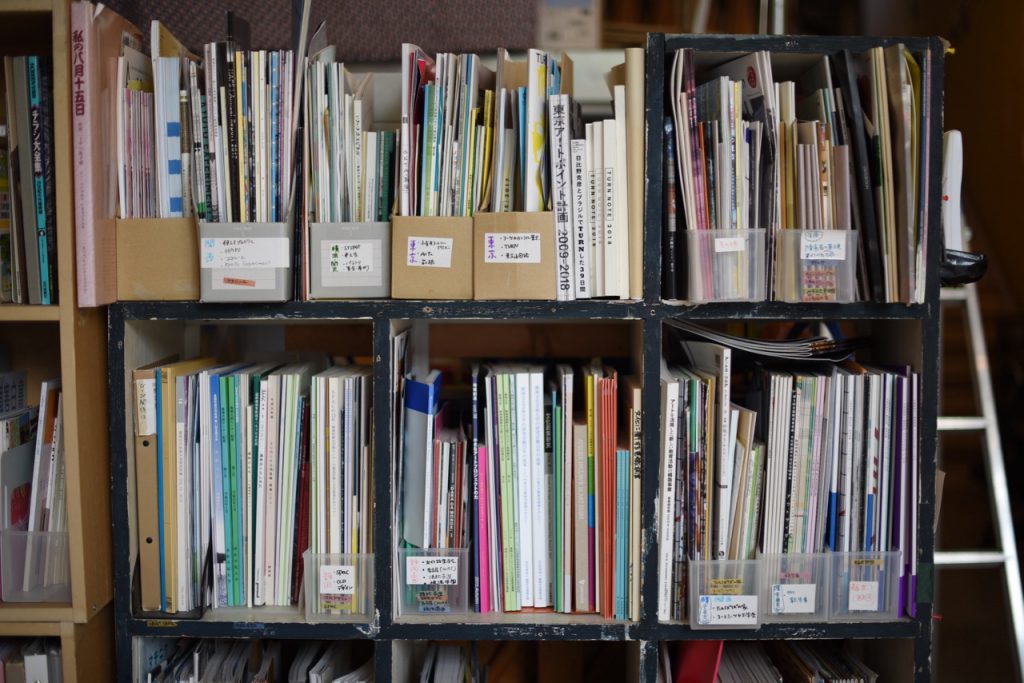
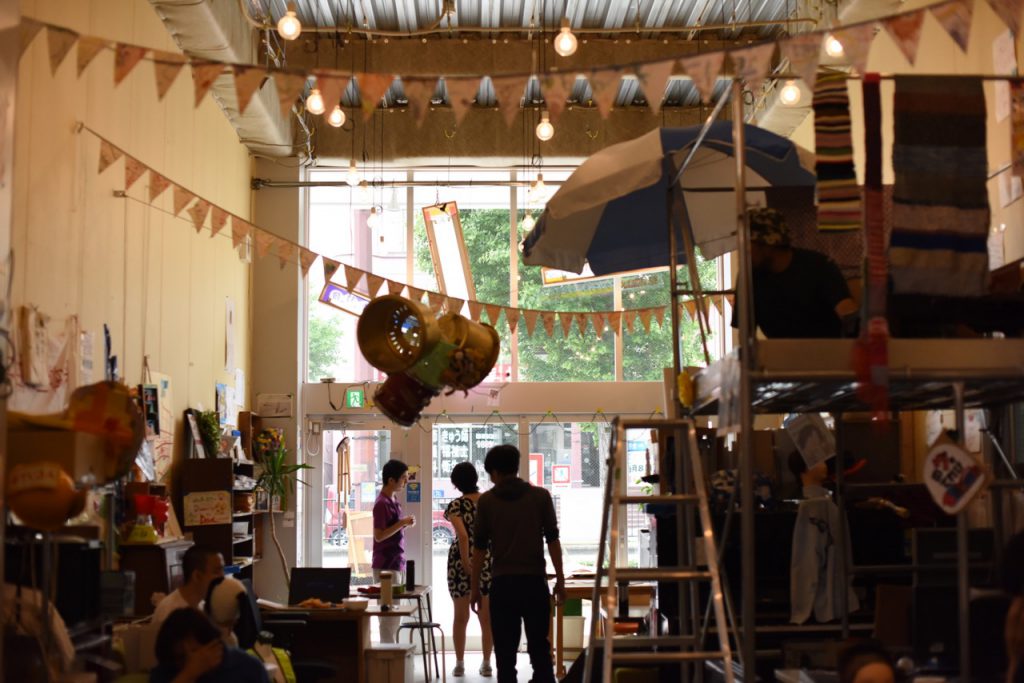
Hamamatsu City, Renjakucho. The “Takeshi Cultural Center Renjakucho” or “Takebun” for short. This might come off sounding like some boilerplate description, but allow me to write a brief introduction to the facility.
Takebun is a facility where people with disabilities can spend their day. It is operated by the NPO “Creative Support LET’S”. Midori Kubota, who represents the NPO, is also Takeshi-kun’s mother. Takeshi-kun has disabilities which make it so that he cannot eat or use the bathroom without assistance. While raising Takeshi-kun, Kubota-san ran into issues with the welfare facilities that were available and decided to create this facility as a place where Takeshi-kun is free to fully live his life the way he wants to.
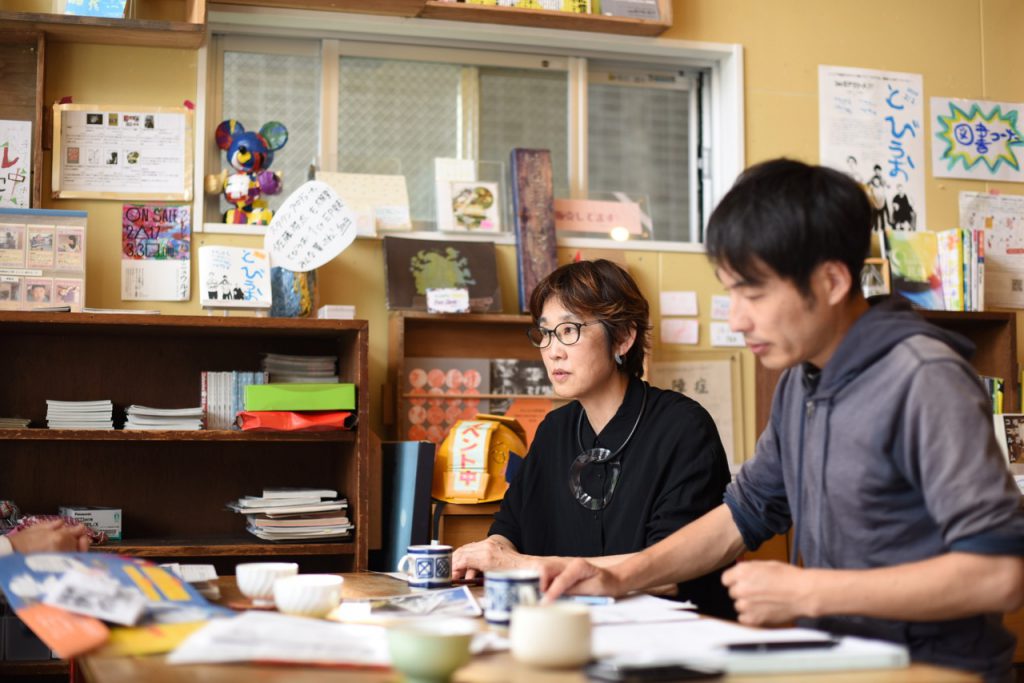
Put simply, LET’S approach is to gather together art and music and create a place where people can spend their time as they please. Since LET’S was established in 2000, they have spearheaded a variety of unique projects and Kubota-san was awarded the “ New Artist Award of Ministry of Education, Culture, Sports, Science and Technology” in 2017. They have garnered attention not only in the field of welfare, but also across a wide range of other fields such as art, drama, and music, which has made many people curious about their activities.
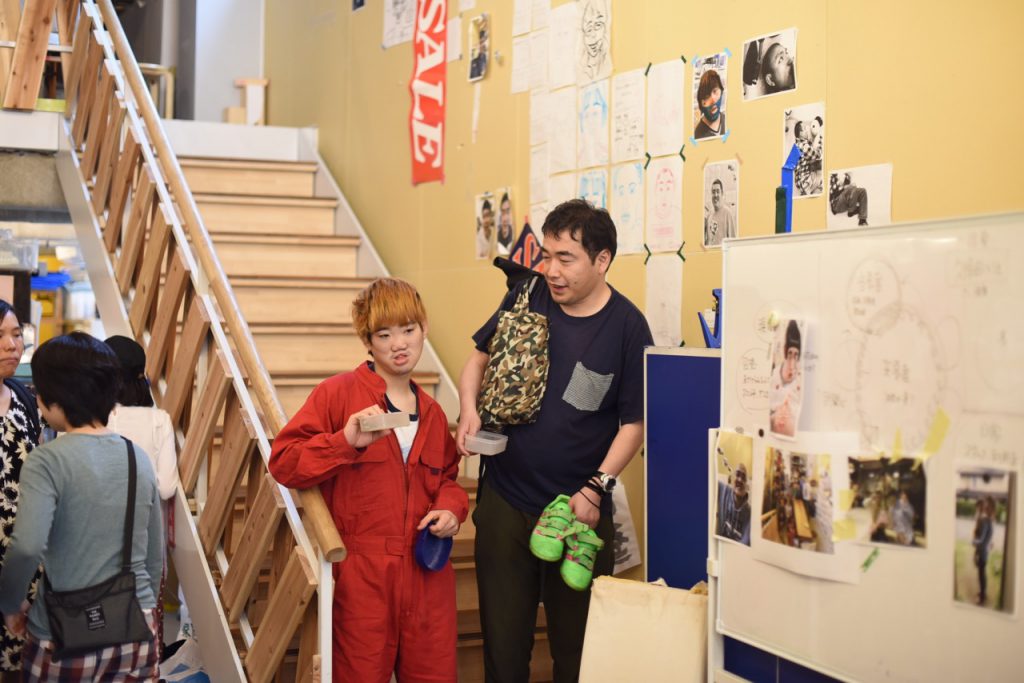
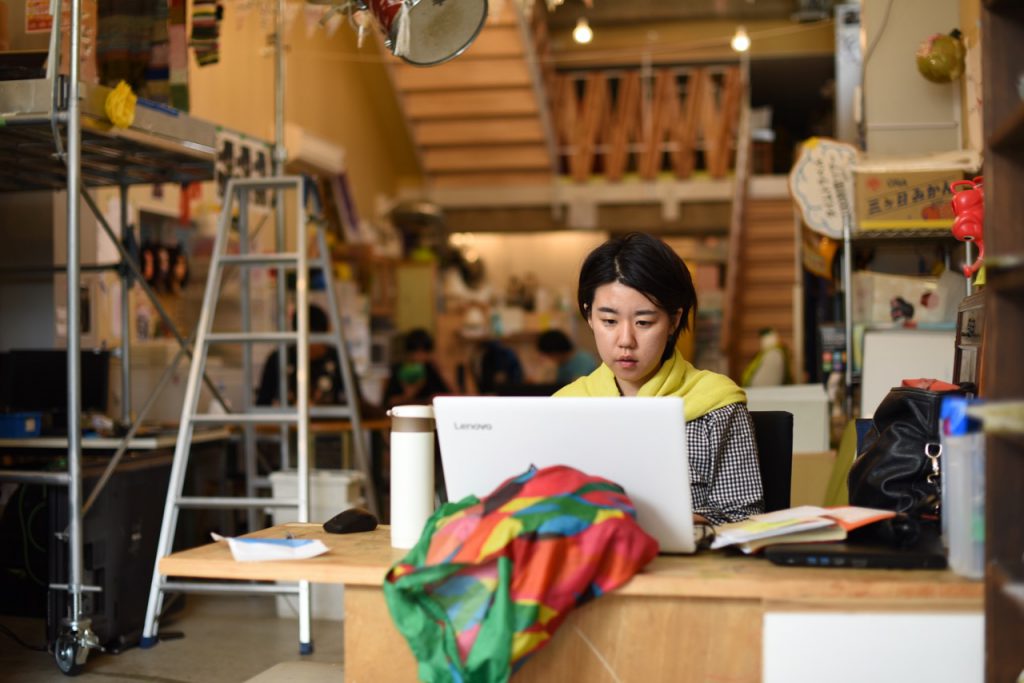
I Can’t Eat Any More Than I Want to Eat
While I sit in a chair near the entrance (on the advice of Aki Kubota, who sits at the front desk) and gape at everything around me, the Takebun clients begin taking out their lunches from a large box placed on a rack by the window. Some people need help eating. Some people use spoons to eat because they’re not so good with chopsticks. Others sit straight, their posture excellent, picking up and eating soybeans one by one with their chopsticks.
This whole scene felt very mysterious to me. The contents of everyone’s lunch may have been the same, but each individual’s way of eating that lunch was so different.
Well, but that’s completely natural, isn’t it? When I think back on this scene now, I don’t feel there’s anything odd about it, but at the time it really struck me how strange it felt. It made me think of when I visited my four-year-old daughter at her kindergarten for “Parent Day”.
In the kindergarten, all the children first sing the “lunch song”, go through their routine, and then say “itadakimasu”, which is a greeting we give in Japanese before eating a meal. It can be roughly translated to “let’s eat”.
I was impressed when my daughter and the other children sang the lunch song. These children, who were so small and selfish before, can now give proper greetings. How she’s grown! But now, watching everyone at Takebun eat, I realized that those children at the kindergarten must also have wanted to eat in their own individual ways. I’m not trying to downplay the value of giving proper greetings or of education. This experience just made me think of these things in a different light.
Us parents tend to believe that “education” means everyone behaves in a controlled manner. And our own parents thought the same thing when they sent us to kindergarten. It’s only natural. That’s the way things are.
However, sitting here at Takebun, I wonder if that’s really natural. The children here are probably happy to be able to eat however they please. Maybe they want to eat with their hands, chew noisily, lick their fingers, or lie down and eat. Or maybe they don’t even want to eat at all right now.
We use education, manners, and common sense to control life’s natural chaos, to become members of society, and to avoid inconveniencing others, all the while believing everyone ought to do everything in the same way. But, while we learn many skills in order to be members of society, we also forget things that are important, such as the ability to question what the essential essence of being a human really is, and the time to ask ourselves such questions.
I was hungry, too, so I ate with everyone at Takebun. I thought about how I want to eat. I got a “Chicken Nanban” lunch from the food court in the basement of “Zaza City” near LET’S. I used chopsticks to place the food in my mouth. I chewed a mouthful of rice and then I chewed a mouthful of other food. Repeat. Turns out the way I eat isn’t so interesting, and this thought had me laughing before I knew it.
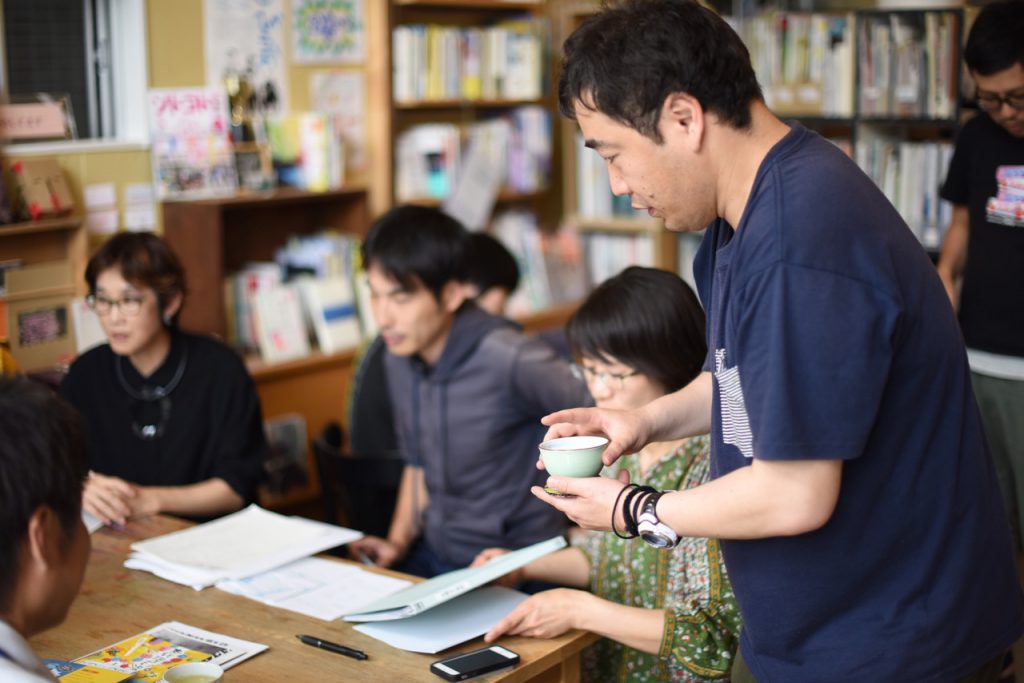

Those Who Are Simply Being Themselves Here
There’s no bell to signal the end of lunch, but lunch ends all the same, and it feels like the afternoon has begun. But no one tells everybody they ought to do one thing or another. Some people sit in chairs and chat. Others lie down on the sofa. Some people appear restless or seem to be chanting something to themselves. One person goes up and down the stairs, hugging a stuffed animal, and I can see another individual apparently talking to the staff about their troubles. Other staff members are doing paperwork or making phone calls.
In my case, I’m busy laughing at all the puns and jokes Muraki-san is telling me. (I’m not sure whether he’s staff or a client, either.)
Each person spends their time here just as they are and as they want to be. No one wears nametags or uniforms, so there are no clear distinctions between staff members and clients.
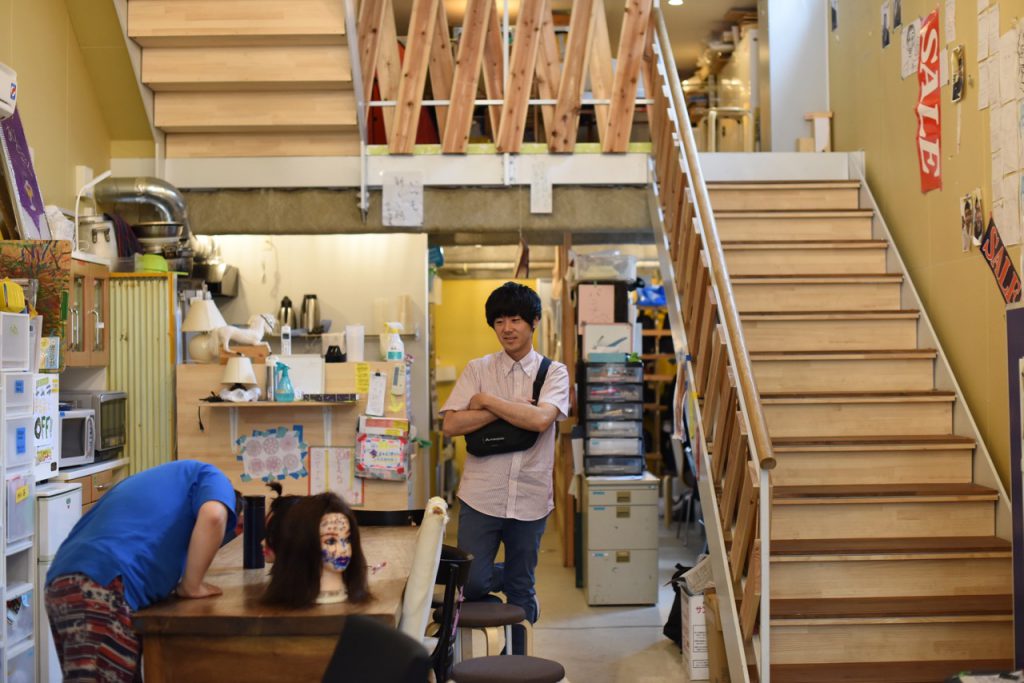
In fact, one person who appears to be a client is soothing another person who I assume is also a client, while another person who may be a client is joking with someone I took to be a staff member, blurring the lines between the two categories even further. I’m basically left to my own devices, and after a while I stop trying to figure out what everyone is or isn’t. This is a strange and wonderful space where people are simply allowed to be just as they are.
Just as they are.
This is a facility for people with disabilities. As such, I expected that the clients might all do some activities, do crafts, learn something, or take some kind of classes. But LET’S wasn’t anything like that. They were simply “being” at the facility. And I don’t mean just the clients, but everyone who comes here. The staff are also just “being” here (and supporting by being). This is how their support manifests.
As soon as I realized this, something else became evident to me. The fact that this is a welfare facility means that before many of these clients came here, it’s likely that they couldn’t just “be” anywhere else.
There are numerous reasons someone might come to a welfare facility: perhaps they are seen as disruptive to society or can’t perform expected group activities, maybe others are frightened by them, maybe they can’t work. If they sit there muttering things, somebody may inevitably shout at them, “You’re too noisy! Get out!”. If they can’t calm down and are endlessly fidgeting, maybe someone would scold them, saying, “Get to work!”. Society at large views many of these behaviors as “bothersome”. For someone who can neither eat nor go to the bathroom without assistance, the act of stepping out of their home (or even being at home) can be quite a challenge, not to mention finding spaces where they can just “be”.
And finding it hard to just “be” isn’t a phenomenon limited to clients of facilities like LET’S. We live in a society that places no value on just “being”. Society says you’re worthless if you aren’t making money or being useful. A variety of expectations and labels are forced on us, such as “male” or “female”, “father” or “mother”, your job title, etc. We are told we’re useless if we just stand around.
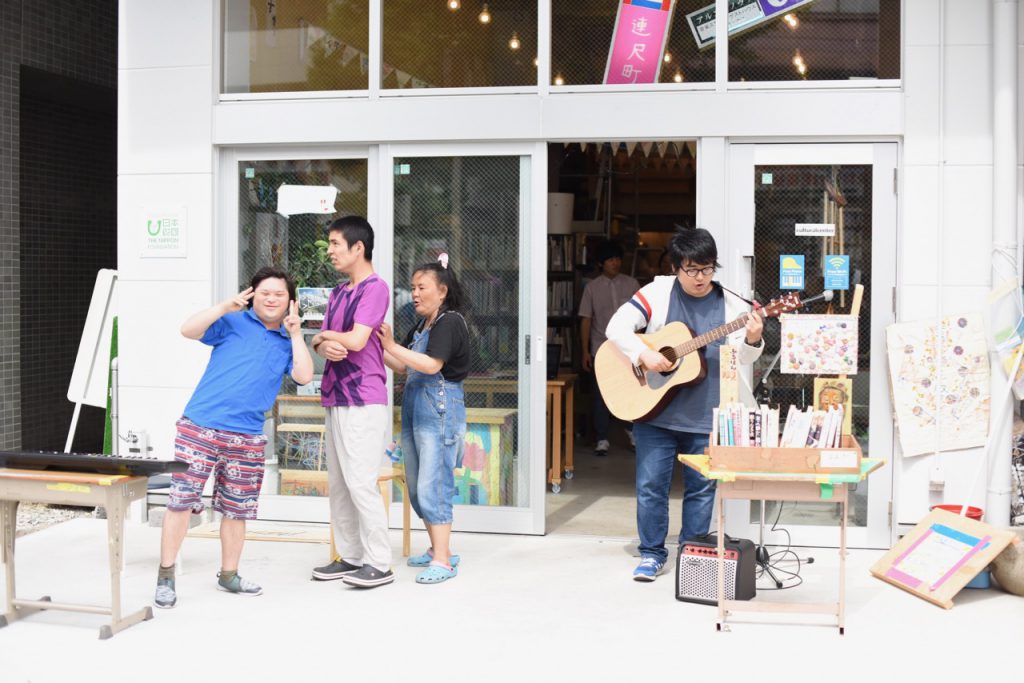
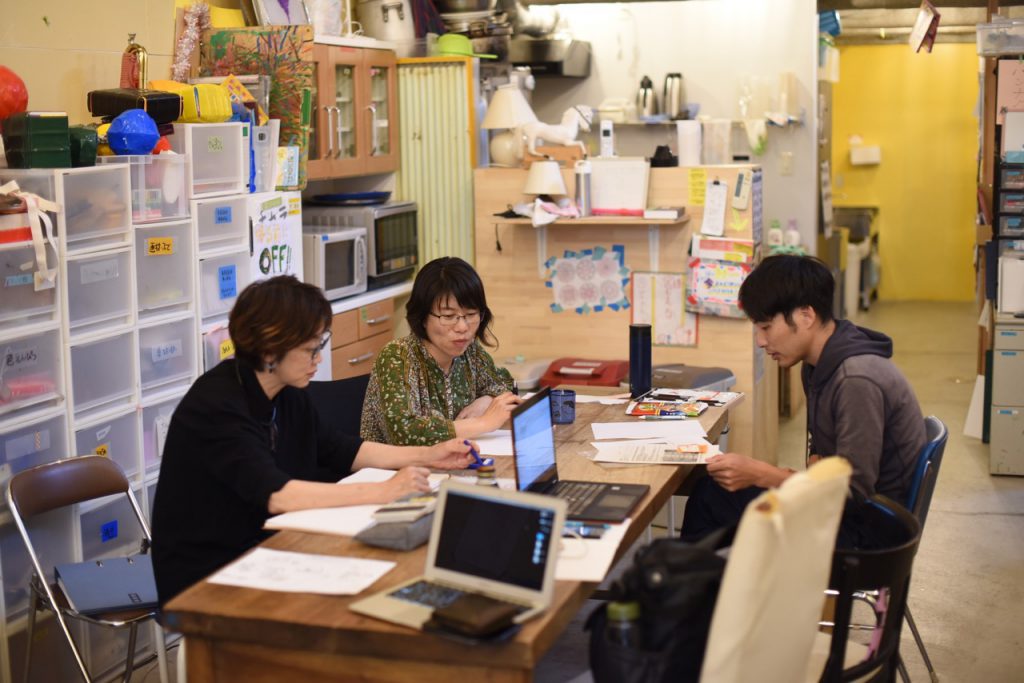
It’s okay to just “be”.
This message reached me as well. All I need to do here is exist. The words gently envelope all “life’s hardships” that exist in me while simultaneously sharply illuminating just how deeply the concept of “existential value” is entrenched within me.
Even while I tell my daughter “just the fact that you were born is wonderful”, I also push my expectations on her and compel her to do certain things. And all the while I think about how I need to better my own reputation to go on living in this society. In this society that tells us we can’t just “be”, I tell my daughter “just the fact that you were born is wonderful”. That’s how this world is.
We must skillfully juggle both ideas. The contradiction leaves a dull sort of ache. However, I think the ways we treat other people also change when we forget about the starting line of just “being”, so we should always try to think back to that starting line. Specifically, in my case, I think I can be gentler in how I act towards my daughter. I feel like rather than forcing ideas upon her, I can more gently accept her for who she is.
At the very beginning of our lives, everyone thinks “just existing is enough”. But eventually that “starting line” is erased (or perhaps I should say we can no longer see it) and I feel like we endlessly advance toward the goal line in front of us, except that goal line is forever getting redrawn by this world of “worth” and “value assessment”. Perhaps what we need to do now is to return to that starting line.
Maybe LET’S acts like a “starting line” for each of us to return to. In our society that only pays attention to goals, it is a very rare place indeed where one can notice our own starting line. This is what I felt the very first day I came here and got involved in LET’S.
I will write articles about the time I spend here at LET’S for this web magazine, detailing the things I see and feel without overthinking it too much. Assuming what I write isn’t too boring and they don’t fire me, this series will continue until the end of March of next year. I want to keep thinking about what’s happening here and putting those thoughts into words as best I can.
See you again next time!
Riken Komatsu
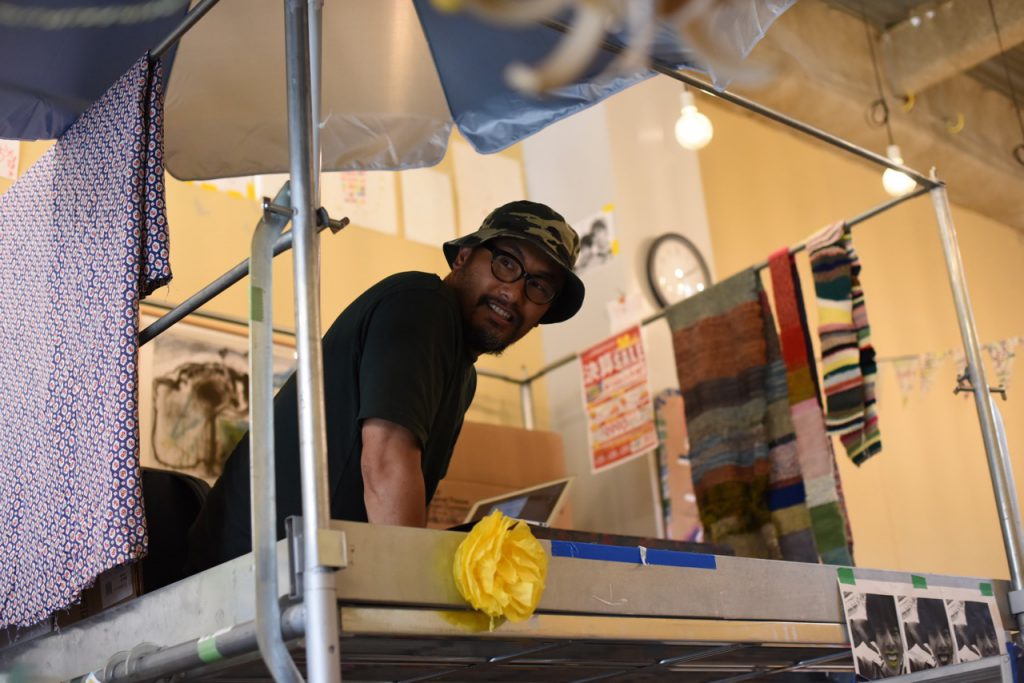
Translator : Koya sato, Anna schnell
コメント
この記事へのトラックバックはありません。
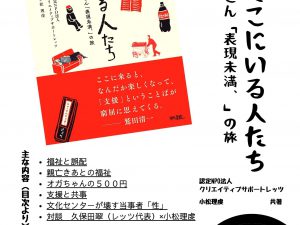
小松理虔さん「表現未満、」の旅が書籍化されました
この度、その小松理虔さんの1年にわたるレッツを観光したウェブマガジンが書籍化されました! 現代書館さんから書籍『ただ、そこにいるひとたち』として全国の書店で販売されています。ぜひお買い求めください。







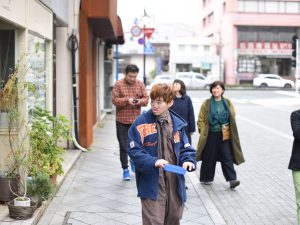
この記事へのコメントはありません。